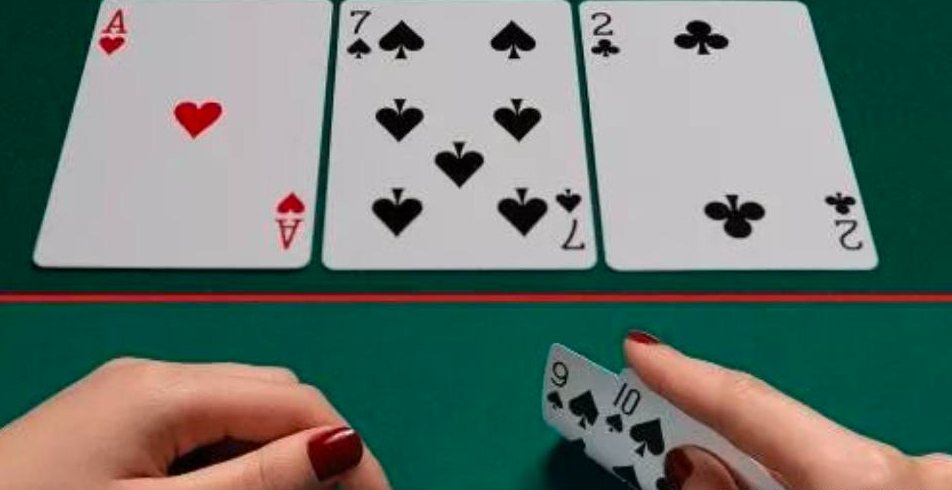Balato8 players have played Poker for a long time, and I believe that players have also found that Texas Hold’em is an easy game to understand but difficult to master. So, if you want to play Texas Hold’em well, you need to make the right decision from the beginning, and the first step is to make a good start before the flop. Today, I will share with you how to avoid pre-flop mistakes.
Correct limping – balato8 Poker Game
Limping; What is Limping?
Limping; What is limping? Limping is a direct translation of the English word “Limp,” which means that when no one raises in front, you call in and want to see the flop cheaply. Generally speaking, the cards used in this strategy could be better. The reason for choosing limping is to use the most miniature chips to mix into the pot and see the flop. It would be great if you hit the public cards you want.
Disadvantages of Limping
But under normal circumstances, the cards that are limped in will almost always put us at a disadvantage, so we should avoid limping before the flop. First of all, this is a passive way of playing because we only have one way to win the pot, that is, to play well after the flop, but playing well after the flop is much more difficult than playing well before the flop, so it is not recommended.
Advantages of Raising Before the Flop
Secondly, we can win the pot before the flop through the strategy of raising without taking too much risk to take away the chips of the blind and limped opponents. Even if the opponent calls or raises and misses the flop, we can still win the pot by continuing to bet.
Comparing Strategies: Limping vs. Raising
So raising before the flop gives us more than one way to win the pot, and limping before the flop almost gives us the best hand to have a chance to win the pot, so which of the two options do you think is easier?

Playing without a plan – balato8 Poker Game
This is the most common problem, that is, there is no clear plan to play this game before the flop, and the plan is very loose. In fact, in Texas Hold’em, the easiest way to win the pot is to have a rigorous plan before the flop:
when you see the hole cards, start thinking about what cards we should use to raise and limp when the current play folds, provided that limping is the right time node. When the opponent bets before you, should we call, raise, or fold? These are all things we need to think about, and we must think about some potential weaknesses in our preflop strategy.
So, the best time to solve these problems when we want to solve them is when we are away from the table because it may be a waste of time to specify a plan when playing against each other. The opponent will also cause us a lot of interference, especially when we are just starting to develop our strategy or making significant changes to our approach.
Fortunately, most of our actions before the flop should follow a plan, and this plan is easy to make when we are not at the table. The rest, the part where our strategy changes due to specific opponents and game environment, will take our playing time. But any adjustments to your preflop strategy should be consistent with a general strong strategy.
Disrupted Play – balato8 Poker Game
Disruption in Strategy
When we don’t have a rigorous strategy, we are often attracted by “random play.” Because many players will do something difficult to think about for no reason and will eventually suffer the bitter fruit of failure due to these sudden stupid decisions.
The Importance of a Rigorous Plan
So we must make a rigorous plan for ourselves, especially excellent Texas Hold’em players who can adjust their tactics according to different situations to maintain a balance point and adapt to other opponents and game conditions. However, they change their play because of specific situations that are targeted. In professional poker games, you will never see a good player only call AA before the flop to disrupt the play.
The Problem with Flat Calling AA
Although the opponent may not expect someone to make a flat call with AA before the flop, it does not mean it is a good play. Although we need always to make the opponent suspicious of us, we can’t play the game unquestioningly to lose value.
Evaluating the Value of Raising vs. Flat Calling
Please continue with the example. Although we can call AA before the flop, which will make the opponent think that we are a garbage hand, we will likely not be able to get the value brought by AA raise or 3be. Using a strong hand like AA to “confuse” the opponent cannot be part of a sound strategy with regular raising and 3-be frequencies.
We can get more value through raising AA preflop, and the random deception flat call obviously cannot earn more value.
If one way seems mixed, it must be because we have thought about what will happen next, so no matter which method we use, it is correct and can play the maximum value of this game. Another possibility is that we have found the opponent’s weakness and can be invincible.
If there is no particular situation, we should not do something unconventional to set a trap or deceive; instead, we should use a sensible and benchmark preflop strategy because this is a regular play.

The Importance of a Preflop Strategy
Developing a Balanced Approach
Developing a correct and rigorous strategy before the flop is an essential skill that will directly affect the outcome of our game, so we must not ignore it. Another important thing is to have moderate tension and relaxation. Don’t play too loose or too tight. Playing too loose will result in some hands being strong enough to play while others are too weak.
Finding the Balance
We worry not whether to give up AA before the flop but whether to fold with a hand like ATo in the middle position. Playing too tight will cause us to give up some valuable hands that could have won money. This also means that our strong hands may rarely get a response from our opponents. Careful opponents will notice that we play very few hands, so when we get a good hand, our opponents will flee.
Conclusion
So many Texas Hold’em beginners need to know which hands are strong enough to play preflop and which hands should be folded. In each position, we should have a clear boundary about which hands we should play and which we should fold. This is very important. Because playing too many unprofitable hands preflop is the quickest way to go from a winner to a loser, even if your post-flop strategy is solid.
